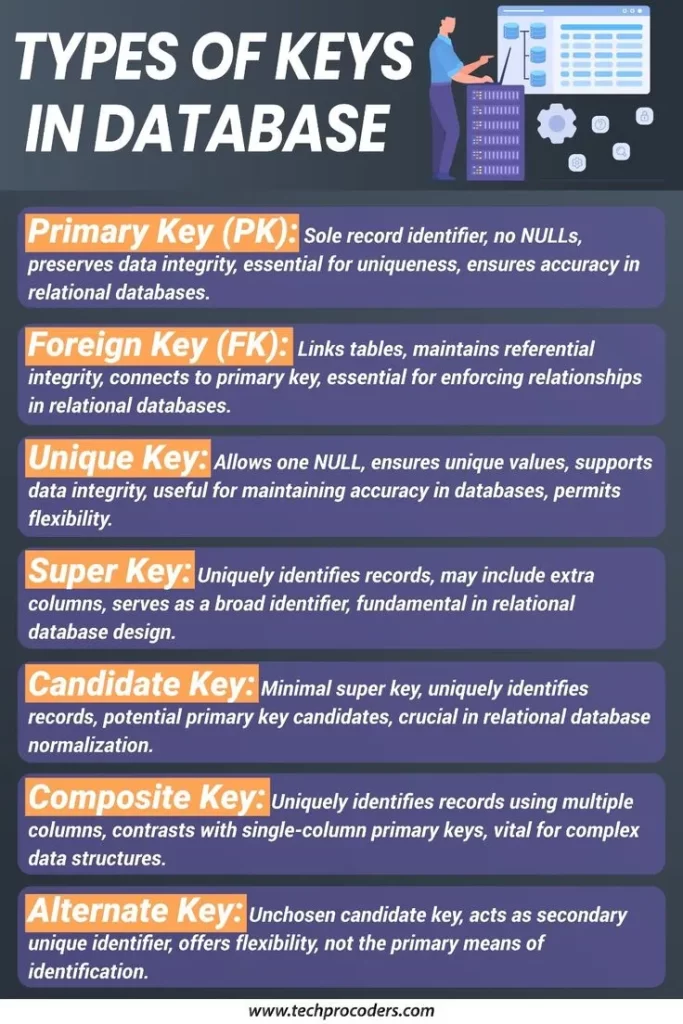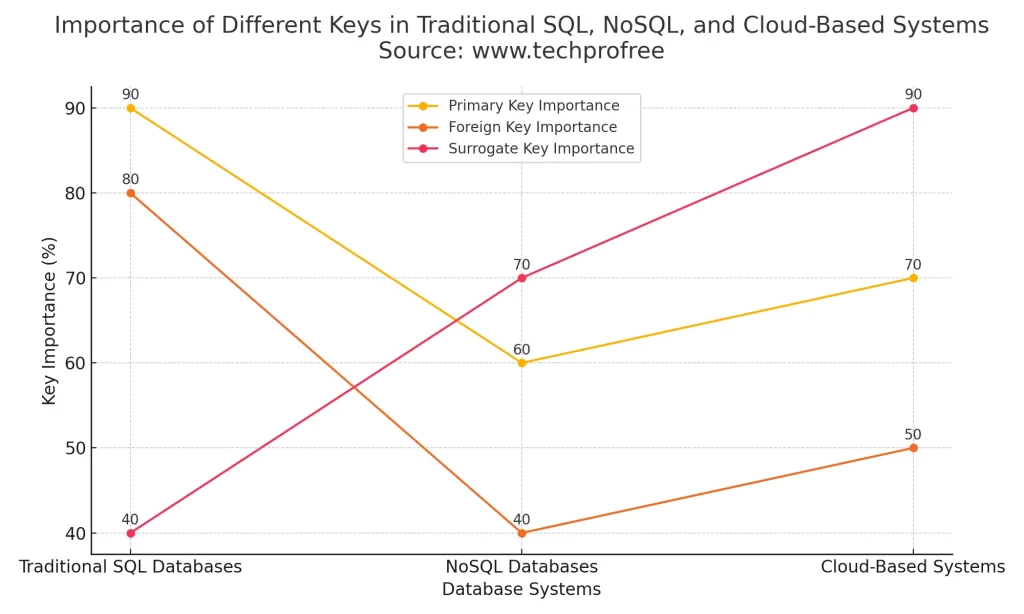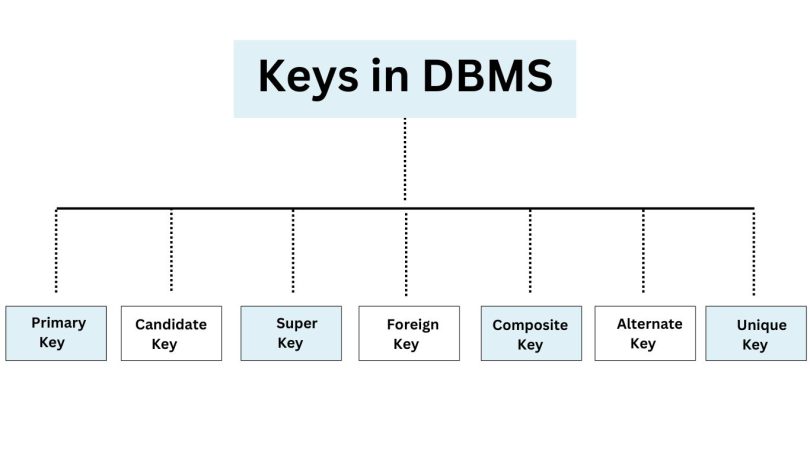In the field of databases, keys in DBMS are vital components to help in sorting and even in the aspect of having structured and well-organized data. They are very useful in pointing out and locating particular records within a DBMS (Database Management System) or a database system.
Understanding the various kinds of keys in DBMS is very important when it comes to organizing data and accessing it when necessary. These keys are surprisingly critical keys that are incredibly effective in maintaining order, accuracy and accessibility of a DBMS.
In this blog, the importance of keys is described and different categories of keys are explained.
Concept of Keys in DBMS
A DBMS key is a field in a counter that differentiates each “record in a database”. They create relationships between different tables and are essential for preserving the integrity of the data stored within the database. These keys help to point out where data can be found, to look for data and to connect data in a system of tables.
They maintain the data’s accuracy, help in searching and retrieving the data, and define the association between the tables.
Primary, foreign and unique keys are crucial in data arrangement and precision when dealing with information. It acts as the primary, candidate and foreign keys that work as the structure of organized databases since they create relations, avoid the duplication of data, and make easy access to data from various tables.
Importance of Keys
Keys in DBMS are the backbone of data accuracy as the unique identifiers of the information flow and processing. Their use is based on the fact that they help order the large amounts of information supplied by the instruments.
Individuals can easily compare recipe contents without ingredients, or in a society where people have no house numbers or street names. Likewise, the databases that do not have keys will be directionless, confusing the data and poor productivity.
Keys enable quick access to particular records while at the same time preventing misuse and creation of double or misleading records. They help in creating a relationship between tables in a way that a particular table refers to another table. An example of such a field is the primary key, which is like a fingerprint of the record, as it uniquely defines it. On the other hand, foreign keys establish relationships between various tables, hence consistency across the database.
Major Categories of Keys in DBMS
It is a set of various codes that can open different doors in the data world, and to comprehend the differences between keys in a DBMS is to possess a set of keys in a box. These keys are not just labels but they are the keys to viable, efficient and secure searching and storing of any information.
Every kind of key in DBMS maintains its relevance as it assists in the course of learning about the many folds of the databases.
Primary Key
A primary key is a unique field within a table that identifies each record distinctly from all other documents.
It helps to prevent the duplication or the presence of null values in the required column and is recognized as the basis of data accuracy.
Candidate Key
This key is another name for a possible primary key of a table. They have characteristics of a primary key but are not chosen as primary key fields.
Super Key
A set of attributes that uniquely identifies a record within a table.
It may contain many attributes more than the need for uniquely searching for records in the database.
Foreign Key
These keys are used to relate between the tables. They direct to the primary key in another table, which checks on referential integrity and therefore maintains consistency in data.
Composite Key
It is where more than one column is used to generate the key for the table.
It avoids the case of having the same values in different column fields where individual columns may have the same values.
Alternate Key
They are other keys that can be used in a table but were not used in defining the primary key for the table. They are used as an added method of identifying records with a unique number.
Unique Key
Like a primary key, a unique key guarantees that no two records will have the same value in the designated field; however, it permits one null value. It ensures that every record is unique and yet it is not the primary key.
Keys have been the major components of databases for many years and their main function is to maintain data and facilitate the data search process. Depending on the development of Big Data, NoSQL and the cloud, the role of keys may change. The fact that plan is more free-form in NoSQL may mean that the key is not as rigid as in the SQL, but the property of uniqueness, for example, will probably remain a fundamental principle. New key management techniques or a combination of a number of them could appear. In cloud storage, keys could also be utilized in the management of the distribution of data to the various servers.

Keys in DBMS Types with Examples and Descriptions
| Key Type | Description | Example |
| Primary Key | Uniquely identifies each record in the table. | StudentID in Students table |
| Foreign Key | References the primary key in another table to maintain relationships. | CustomerID in Orders table |
| Candidate Key | A potential primary key chosen from a set of super keys. | SSN in Employees table |
| Composite Key | A combination of two or more columns to create a unique identifier. | OrderID + ProductID in OrderDetails table |
| Unique Key | Ensures that all values in a column are unique, allows one NULL. | Email in Users table |
Importance Of Different Keys In DBMS Traditional SQL, NoSQL, cloud Based systems





Leave a Comment